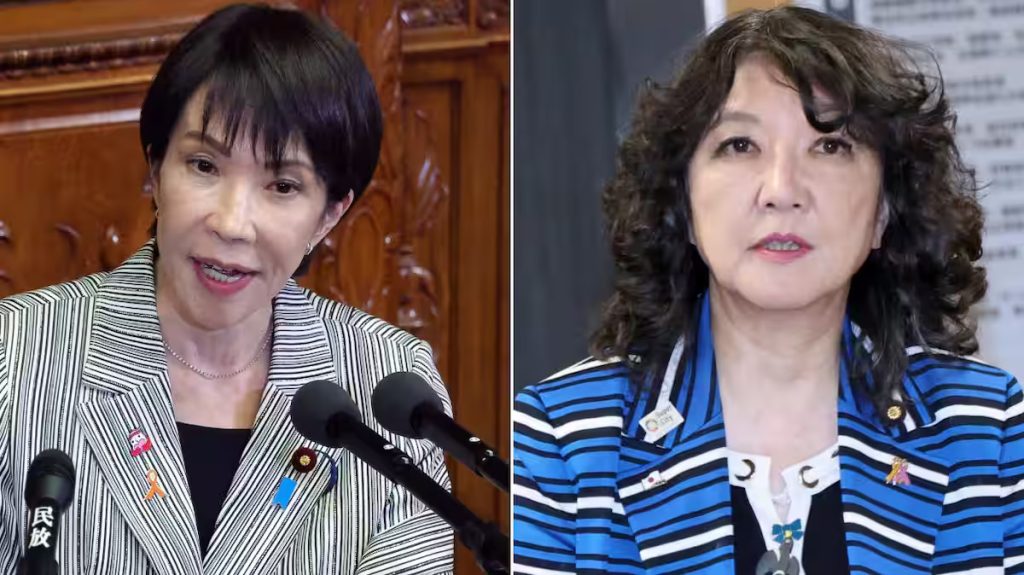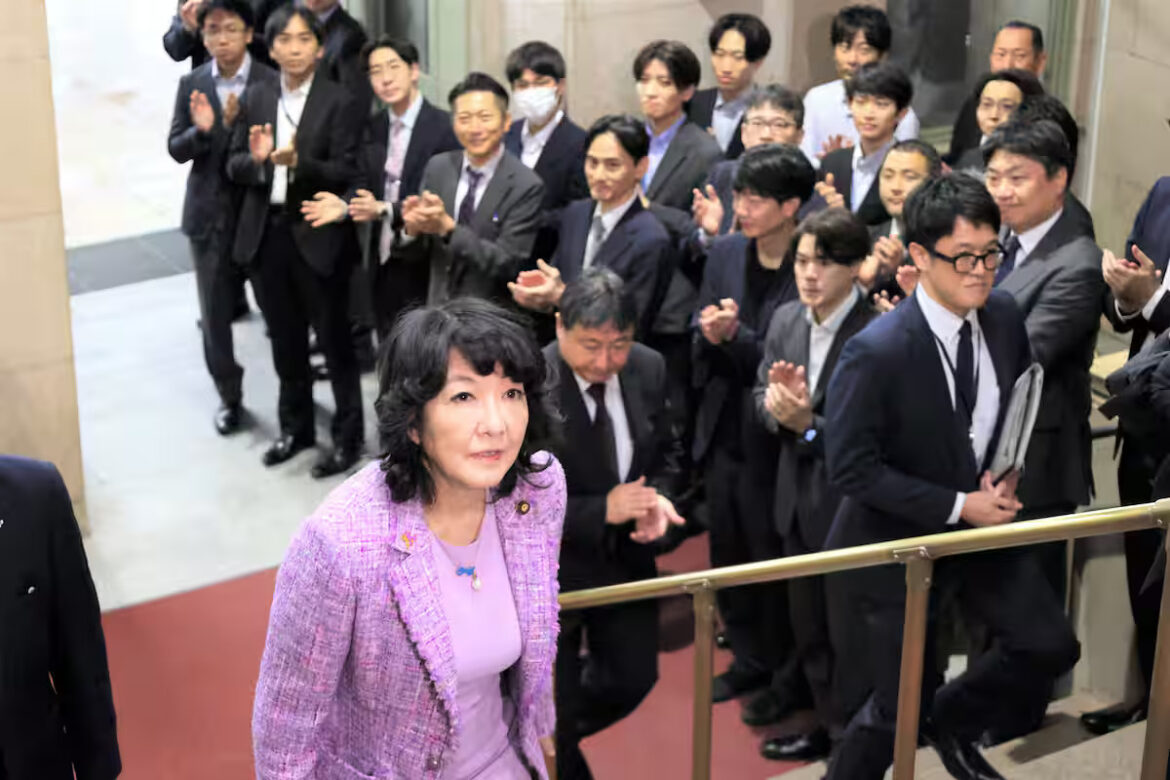Japan’s first female finance minister took office in October with a high-profile mandate. A veteran of the old Ministry of Finance (MOF) and a longtime Liberal Democratic Party (LDP) lawmaker, Satsuki Katayama has been tapped by Prime Minister Sanae Takaichi to drive the new government’s “proactive, responsible” fiscal agenda.
Known inside the LDP as a sharp political operator, Finance Minister Katayama brings a reputation as a fiscal dove who favors bold spending to revive growth. In her first press comments, she emphasized a focus on “revitalising the economy with expansionary fiscal policy.”
So just who is Japan’s first female Minister of Finance?
Background and Career
Katayama is a seasoned policy insider. Born in Saitama Prefecture in 1959, she graduated from the University of Tokyo’s law faculty in 1982 (famously winning a Miss Tokyo University contest that year). She immediately entered the Ministry of Finance, where, over two decades, she built a trailblazing record.
Katayama studied at France’s École nationale d’administration (ENA) in 1985 and rose through MOF’s tax and budget bureaus. In 2004, she became the first woman to serve as a budget examiner in the ministry’s Budget Bureau.
Then, in 2005, Katayama left the bureaucracy and won her first Diet seat during the landslide election of Junichiro Koizumi. She served as Parliamentary Vice-Minister of Economy, Trade and Industry (METI) in the Koizumi Cabinet. After a brief electoral defeat in 2009, she returned as a member of the House of Councillors in 2010.
A Trusted Ally
Over the years, she’s taken on several senior roles. In 2018, she was appointed Minister of State for Regional Revitalization, Regulatory Reform, and Gender Equality under Prime Minister Shinzo Abe. By 2025, she had become a trusted conservative voice in the party.
When PM Takaichi formed her cabinet, Katayama was chosen as Finance Minister. That made her, at age 66, the first woman ever in that powerful post.
 Prime Minister Sanae Takaichi (left) and Finance Minister Satsuki Katayama.
Prime Minister Sanae Takaichi (left) and Finance Minister Satsuki Katayama.
Her rise also reflects long-standing alliances. Katayama was an early backer of Takaichi’s leadership bid. Speaking on Nippon Journal on November 11, Sankei Shimbun’s Takashi Arimoto noted, “It was Katayama who told [Takaichi] to run for the party presidency and backed her all the way.”
Arimoto also revealed that Katayama even personally encouraged Takaichi during the campaign, and their partnership is seen as a strength of the new Cabinet.
Within MOF circles, her appointment sent a shiver down bureaucratic spines. As Sankei’s Rui Abiru quipped on the same program, Katayama “has more impact than anyone” and the entire ministry “must be trembling” under her bold style.
 Economic Philosophy and Agenda
Economic Philosophy and Agenda
Katayama is broadly aligned with Takaichi’s embrace of expansionary, Abenomics-style policies. She has called herself a proponent of vigorous fiscal action. Reuters described her as a “fiscal dove,” someone comfortable with larger deficits in the short run to boost growth, while noting she is well aware of macro risks. Indeed, her past remarks on currency suggest she favors a stronger yen (around ¥120-130 to the dollar) to counter excessive weakness.
Katayama’s track record indicates both pragmatism and boldness. She is trusted for her execution skills. As a former budget official, she possesses deep technical expertise, and her ability to answer complex economic questions means the usual bureaucratic jargon won’t fool her.
As Abiru noted, the standard MOF strategy of using highly technical language “simply won’t work on Katayama.” In practice, this expertise means she is likely to push through Takaichi’s priorities with speed and precision.
She even maintains an active social media presence, consciously using online platforms to explain things, fulfilling her accountability to the public. Katayama has vowed to explain policies in plain language. For instance, she often holds press events and tweets charts when budget drafts are released, making technical proposals more accessible to the public.
In short, Japan’s budget will now be driven by someone who combines bureaucratic savvy with a populist touch.
Building Momentum Through Targeted Stimulus
Regarding policy details, Katayama has already moved on several fronts. Within days of the new Cabinet’s formation, government sources reported a ¥13.9 trillion JPY ($93 billion USD) stimulus package focused on inflation relief and growth.
The plan, emblematic of Takaichi’s “responsible, proactive fiscal policy,” includes scrapping the provisional gasoline tax levy by year-end. Furthermore, it includes expanding grants to local governments (particularly aiding small businesses) and investing in strategic growth sectors like AI and semiconductors. Katayama herself has affirmed that the supplementary budget will be “sufficient to cover all measures needed,” indicating she is on board with a very large spending envelope.
On taxation, Katayama follows the party line of avoiding radical cuts to the consumption tax, given its role in funding pensions and health care. Instead, she has embraced targeted relief (like ending the gas tax) and broader incentives.
Her tenure as a regulatory minister suggests she will also prioritize deregulation and increased productivity. United States Treasury Secretary Scott Bessent praised Katayama’s “outstanding work on deregulation” from her previous cabinet role and expressed confidence that she will help “drive productivity gains” in Japan.
 Finance Minister Satsuki Katayama (left) shakes hands with US Treasury Secretary Scott Bessent before their meeting. October 27, at the Finance Ministry in Tokyo (pool photo).
Finance Minister Satsuki Katayama (left) shakes hands with US Treasury Secretary Scott Bessent before their meeting. October 27, at the Finance Ministry in Tokyo (pool photo).
With Japan’s inflation above target and a weak yen, balancing stimulus with long-term discipline will be her main challenge. However, her background suggests she is familiar with the MOF’s budget rules and can guide the debt issuance if needed.
 Challenging the Bureaucracy
Challenging the Bureaucracy
A defining theme of Katayama’s approach is her confrontation with Japan’s entrenched fiscal bureaucracy. Since taking office, she has been using her position to force transparency and break old compromises. The most striking example so far is the gasoline tax saga.
Although abolishing the so-called “provisional” gasoline levy had already been agreed upon by ruling and opposition parties, the timetable was uncertain.
Independent journalist Shinichiro Suda reported in a November 1 broadcast that Katayama personally intervened to speed up the repeal. His investigation found that she insisted a post-Christmas postponement was unacceptable to public sentiment, so her team “shortened the period by four weeks” and set December 31 as the cutoff for the tax. In other words, Katayama drew up her own accelerated schedule and pushed MOF officials to meet it.
What’s Next
Katayama will need to strike a balance between bold stimulus and fiscal realities in the coming months. The government’s newly drafted stimulus budget will be Parliament’s first big test. Analysts are watching whether her ministry will issue new debt or tap reserves, and how she coordinates with Japan’s central bank (the MOF oversees BOJ communications).
Katayama has said little about interest-rate policy, focusing instead on taxes and spending. However, foreign markets are closely watching her, as her policy mix could impact exchange rates and inflation. Already, a slight yen recovery has been attributed in part to market beliefs that Katayama might resist an overly weak currency.
Whatever happens, Katayama’s personal imprint is clear. Under her leadership, there could be greater transparency and increased public engagement on issues such as tax hikes, benefit reforms, and debt management.
On the first press conference after taking office, Katayama told reporters simply that Takaichi’s fiscal policy is “a promise to the people” and pledged to carry it out. If she succeeds, Japan may see a more responsive fiscal policy and an MOF that, for once, is making its moves in full daylight.
 RELATED:
RELATED:
Author: Daniel Manning
Continue Reading


AloJapan.com